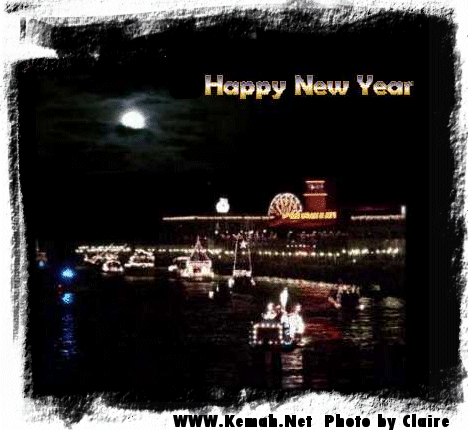To: Star Traveler
 New Years Eve PARTY GUIDE"BRINGING IN TWENTY TEN KEMAH STYLE WITH A BLUE MOON"
New Years Eve PARTY GUIDE"BRINGING IN TWENTY TEN KEMAH STYLE WITH A BLUE MOON"
3 posted on
12/31/2009 11:34:30 AM PST by
BellStar
(Be strong ........Joshua 1:6)
To: BellStar
The historical and correct definition, according to the Farmer's Almanac, is that it's the "third full moon in a season [i.e., Winter, Spring, Summer, Fall] with four full moons in it.
And because of this historical and long-standing definition (prior to the mistaken article which ended up changing a lot of people's minds to the wrong definition) -- the Blue Moon does not occur until the moon of November 6 to December 4th of 2010.
For the year 2010, these are the dates of the moons in the northern hemisphere using UTC calculations. These dates use the actual solstices and not the artificial solstices that give each season an equal number of days.
- 2009 December 16 - January 14 = Early Winter moon
- January 15 - February 13 = Mid Winter moon
- February 14 - March 14 = Late Winter moon
- March 15 - April 13 = Early Spring moon
- April 14 - May 13 = Mid Spring moon
- May 14 - June 11 = Late Spring moon
- June 12 - July 10 = Early Summer moon
- July 11 - August 9 = Mid Summer moon
- August 10 - September 7 = Late Summer moon
- September 8 - October 6 = Early Fall moon
- October 7 - November 5 = Mid Fall moon
- November 6 - December 4 = Blue moon
- December 5 - 2011 January 3 = Late Fall moon
4 posted on
12/31/2009 11:37:16 AM PST by
Star Traveler
(At Christmas - remember to keep "Christ" in the One-World Government that we look forward to)
To: BellStar
From Wikipedia "
Blue Moon"
A blue moon is a full moon that is not timed to the regular monthly pattern. Most years have twelve full moons which occur approximately monthly, but in addition to those twelve full lunar cycles, each solar calendar year contains an excess of roughly eleven days compared to the lunar year. The extra days accumulate, so that every two or three years (on average about every 2.7154 years[1]), there is an extra full moon. The extra moon is called a "blue moon." Different definitions place the "extra" moon at different times.
- In calculating the dates for Lent and Easter, the Clergy identify the Lent Moon. It is thought that historically when the moon's timing was too early, they named an earlier moon as a "betrayer moon" (belewe moon), thus the Lent moon came at its expected time.
- Folklore gave each moon a name according to its time of year. A moon which came too early had no folk name – and was called a blue moon – bringing the correct seasonal timings for future moons.
- The Farmers' Almanac defined blue moon as an extra full moon that occurred in a season; one season was normally three full moons. If a season had four full moons, then the third full moon was named a blue moon.
- Recent popular usage defined a blue moon as the second full moon in a calendar month, stemming from an interpretation error made in 1946 that was discovered in 1999.[2]
5 posted on
12/31/2009 11:38:01 AM PST by
Star Traveler
(At Christmas - remember to keep "Christ" in the One-World Government that we look forward to)
To: BellStar
Then there are The Marcells. Great song!
6 posted on
12/31/2009 11:39:57 AM PST by
RexBeach
("Those are my principles...if you don't like them, I have others." Groucho Marx)
To: BellStar
The way I read the article, the blue moon occurred on Dec. 2.
7 posted on
12/31/2009 11:41:20 AM PST by
1raider1
FreeRepublic.com is powered by software copyright 2000-2008 John Robinson
